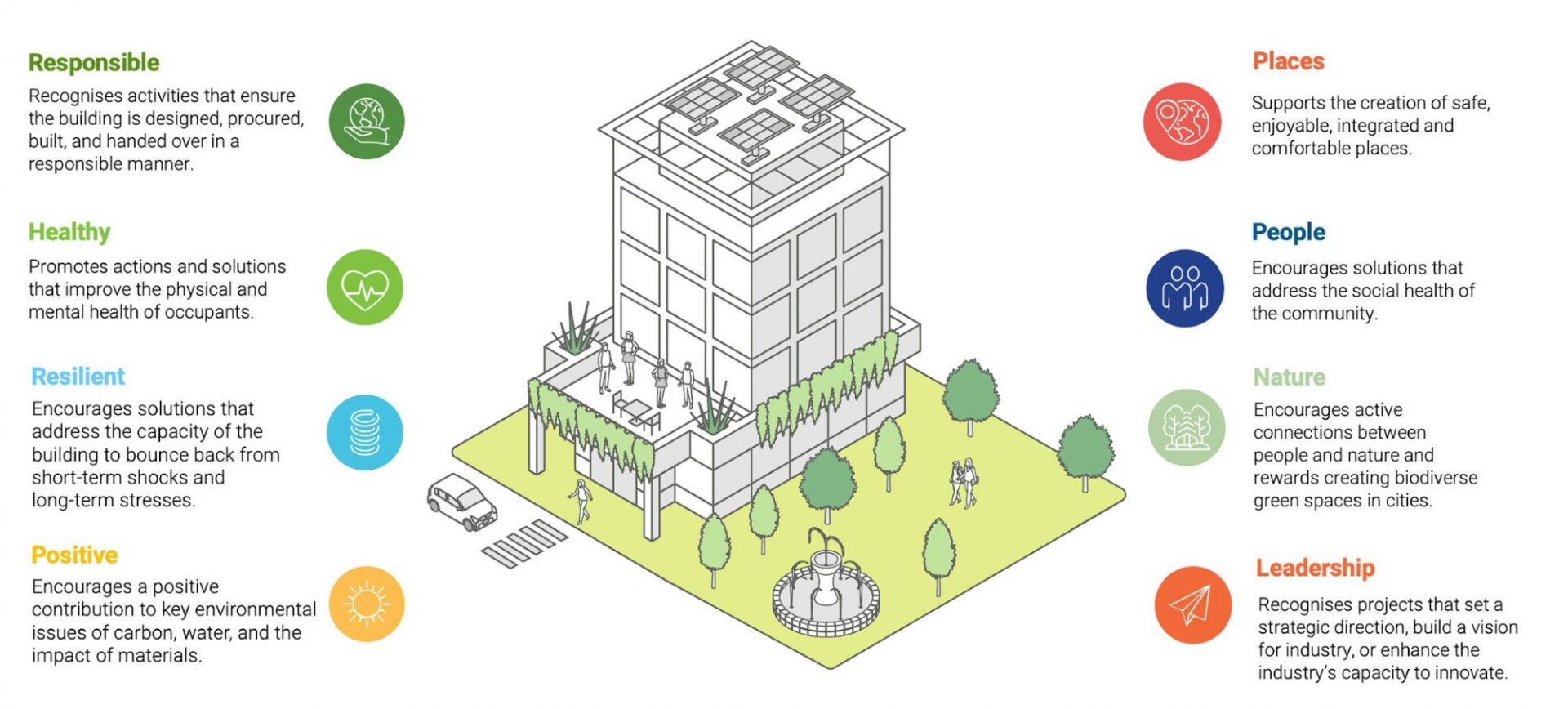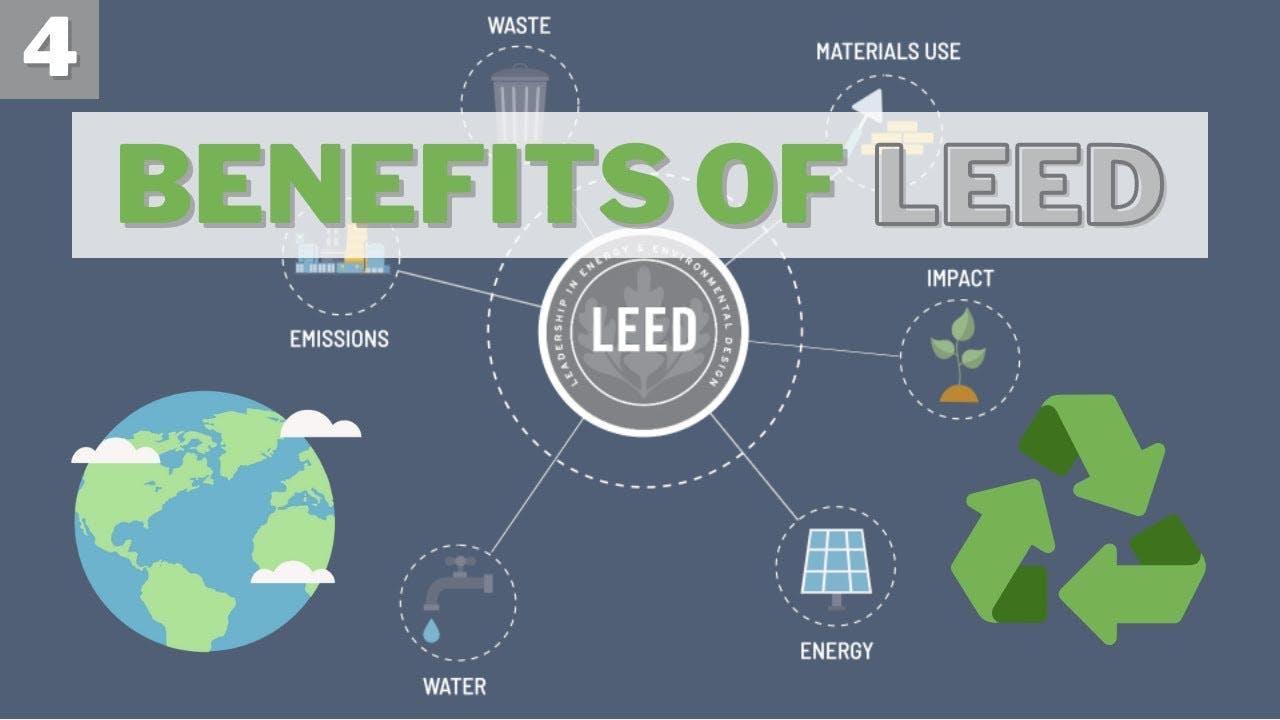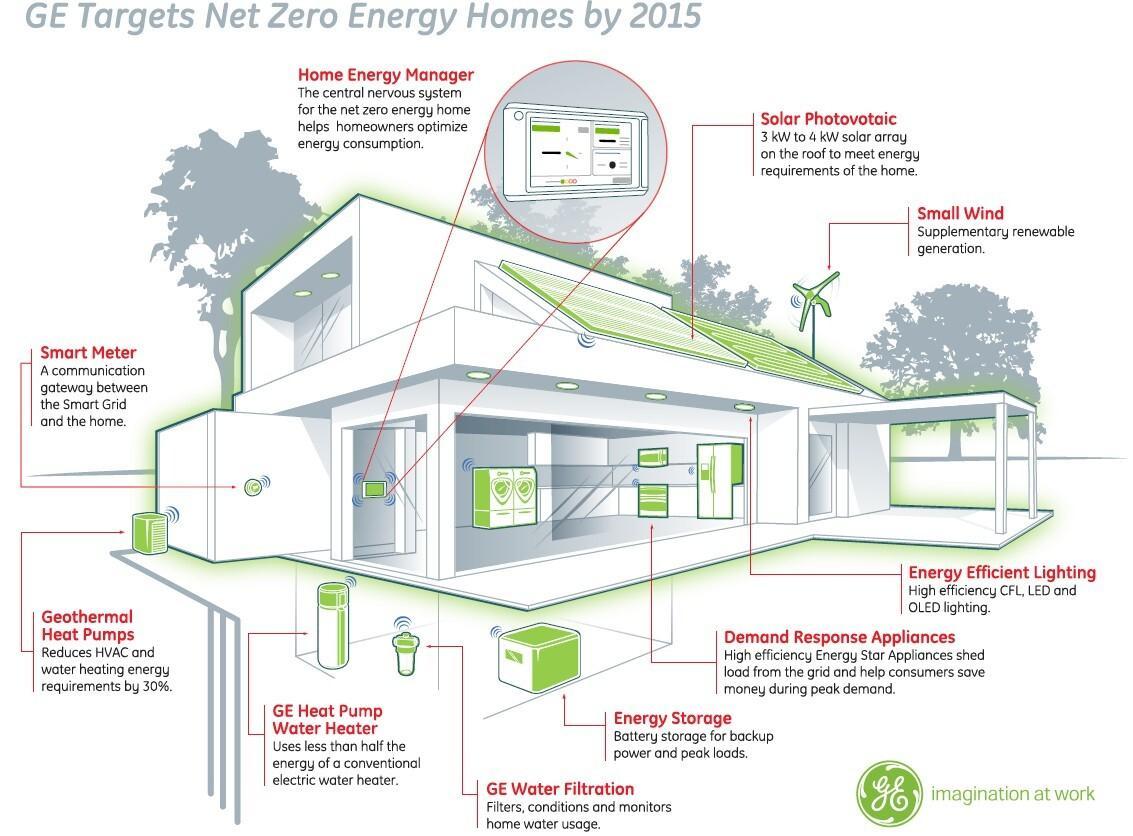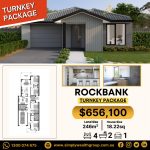Green Home Buyers’ Guide: Navigating the Property Market for the First Time
In a world where 73% of global consumers are willing to change habits for sustainability, first-time homebuyers face a pivotal choice: how can eco-friendly investments redefine not just homes, but lifestyles and futures?
The Rise of Sustainable Living
Sustainable living is no longer a niche trend; it’s a transformative movement reshaping the property market. One critical driver is the integration of renewable energy systems, particularly solar power, which has seen a 62% adoption rate among new builds, according to the NAHB survey. This shift is not just about environmental benefits but also about long-term economic advantages, as homeowners reduce utility costs and even generate income by selling excess energy back to the grid.
Another underexplored factor is water conservation technologies. Features like rainwater harvesting systems and low-flow fixtures are becoming essential, addressing global water scarcity while lowering household expenses. These innovations align with broader sustainability goals, offering practical solutions for resource management.
Interestingly, green certifications such as LEED and ENERGY STAR are challenging the misconception that eco-friendly homes are less marketable. Data reveals that over 40% of green-certified homes spend no additional time on the market, reflecting growing buyer confidence in these properties.
For first-time buyers, the actionable takeaway is clear: prioritize homes with energy-efficient systems, water-saving features, and credible certifications. These choices not only reduce environmental impact but also enhance property value, ensuring a future-proof investment.
Benefits of Purchasing a Green Home
One standout benefit of green homes is improved indoor air quality, achieved through non-toxic materials and advanced ventilation systems. These features reduce allergens and pollutants, directly enhancing health outcomes, particularly for individuals with respiratory conditions.
Real-world applications include homes designed with low-VOC paints, formaldehyde-free insulation, and HEPA filtration systems, which collectively create a healthier living environment. This approach aligns with public health research linking indoor air quality to reduced healthcare costs and improved productivity.
A lesser-known factor is the role of biophilic design, which integrates natural elements like indoor plants and sunlight. This not only improves air quality but also fosters mental well-being, as studies show connections between nature exposure and reduced stress.
For buyers, the actionable insight is to prioritize homes with certified non-toxic materials and biophilic elements. These investments ensure a healthier, more comfortable lifestyle while supporting long-term property value.

Image source: homesourcebuilders.com
Understanding the Green Property Market
The green property market is reshaping real estate, driven by rising consumer demand and regulatory shifts. A 2024 survey revealed 78% of buyers prioritize sustainability, reflecting a societal pivot toward eco-conscious living.
Unexpectedly, retrofitting older homes with green features is surging. For instance, adding solar panels or rainwater systems can increase property value by up to 10%, according to McKinsey & Company.
A common misconception is that green homes are prohibitively expensive. However, government incentives and falling technology costs make eco-friendly upgrades more accessible, offering long-term savings through reduced energy bills.
Experts emphasize the intersection of sustainability and community planning. Green neighborhoods, featuring shared renewable energy systems, demonstrate how collective efforts amplify environmental and economic benefits.
For first-time buyers, understanding these dynamics ensures smarter investments in properties that align with both personal values and market trends.

Evolution of Eco-Friendly Real Estate
Smart home technology is revolutionizing eco-friendly real estate. Automated systems like intelligent thermostats and adaptive lighting reduce energy consumption by up to 30%, according to Energy Star, while enhancing convenience and comfort.
A lesser-known factor is the integration of geothermal heating systems, which leverage underground temperatures for efficient climate control. These systems, though initially costly, offer 50-70% energy savings over traditional HVAC systems, making them a long-term asset.
Real-world applications include community-scale renewable energy projects, such as shared solar farms, which democratize access to clean energy. These initiatives align with sustainability goals while fostering economic inclusivity.
Challenging conventional wisdom, green retrofitting often outperforms new builds in cost-effectiveness. For example, upgrading insulation or installing energy-efficient windows can yield immediate utility savings without the environmental footprint of new construction.
For buyers, prioritizing homes with smart systems and scalable green features ensures adaptability to future technologies, maximizing both sustainability and resale value.
Key Sustainable Certifications and Standards
LEED certification stands out for its flexible, points-based system, accommodating diverse building types. It evaluates energy efficiency, water conservation, and material sustainability, ensuring comprehensive environmental performance.
A lesser-known aspect is LEED for Neighborhood Development, which integrates urban planning with sustainability. This certification promotes walkability, public transport access, and green spaces, fostering healthier, low-carbon communities.
Real-world applications include mixed-use developments that align with LEED standards, attracting eco-conscious investors and tenants. For instance, LEED-certified neighborhoods in the U.S. report higher property values and reduced operational costs.
Challenging assumptions, regional adaptations of LEED, like LEED India, address local environmental challenges, proving its global scalability. Buyers should prioritize certifications tailored to their region for maximum impact.
Actionable insight: Focus on properties with multi-tiered certifications like LEED Platinum, ensuring long-term value and regulatory compliance.
Government Policies and Incentives for Green Homes
Demand-side incentives, like tax credits and grants, effectively drive consumer adoption of green homes. For example, the U.S. Federal Energy Efficient Home Tax Credit reduces upfront costs, encouraging eco-friendly upgrades.
A lesser-known approach is zoning bonuses, allowing developers to construct taller buildings if they meet green standards. This strategy, seen in Peru, optimizes urban density while promoting sustainability.
Real-world implications include reduced financial barriers for homeowners and enhanced market competitiveness for developers. These policies also align with broader goals like carbon reduction and urban resilience.
Actionable framework: Governments should balance financial incentives with non-financial motivators like expedited permits, ensuring long-term market transformation without over-reliance on subsidies.
Financial Planning for Green First-Time Buyers
Start by prioritizing energy-efficient mortgages (EEMs), which bundle eco-upgrades into home loans. For instance, EEMs can finance solar panels, reducing utility bills by up to 50%, according to the U.S. Department of Energy.
Misconception alert: Green homes aren’t always costlier. Declining technology prices and government incentives, like tax credits, often offset initial expenses. For example, a $5,000 solar tax credit can significantly lower upfront costs.
Expert tip: Treat green investments as long-term savings. Think of energy-efficient upgrades as “financial insulation,” shielding you from rising energy costs while boosting resale value by up to 10%, per Savills research.
Actionable insight: Use online calculators to estimate savings from green features. This ensures informed decisions, balancing upfront costs with future benefits.
Assessing the True Cost of Green Properties
Hidden costs like maintenance of advanced systems (e.g., solar inverters) often surprise buyers. A 2023 study revealed that lifecycle costs, not just upfront expenses, determine long-term affordability.
Key insight: Green certifications like LEED reduce operational costs by up to 20%, but regional factors—climate, labor, and material availability—can skew savings. For instance, solar panels yield higher ROI in sunny states like Arizona.
Actionable framework: Evaluate costs using life-cycle analysis (LCA). This method accounts for installation, maintenance, and replacement, ensuring a holistic view of affordability. Pair LCA with local incentives to maximize financial and environmental returns.
Exploring Green Financing Options
Green bonds offer a unique pathway, funding eco-friendly projects with lower interest rates. For example, a 2024 report highlighted their role in financing solar-powered housing developments, reducing costs for both developers and buyers.
Why it works: Green bonds attract socially responsible investors, ensuring steady capital flow. Their strict eligibility criteria—like environmental impact reporting—boost transparency, fostering trust among stakeholders.
Actionable insight: Pair green bonds with Property Assessed Clean Energy (PACE) financing. This hybrid approach enables long-term funding for energy-efficient upgrades, repaid via property taxes, ensuring affordability without upfront financial strain.
Analyzing Long-Term Savings and ROI
Energy-efficient upgrades, like smart thermostats, yield up to 20% annual utility savings. A 2023 study found homes with solar panels appreciated 4% faster, enhancing resale value and reducing energy costs simultaneously.
Why it works: These upgrades lower operational expenses while increasing property desirability. Additionally, government incentives, such as tax credits, further amplify ROI by offsetting initial investment costs.
Actionable insight: Use lifecycle cost analysis (LCA) to evaluate savings over time. Combine this with energy-efficient mortgages (EEMs) to finance upgrades affordably, ensuring both immediate and long-term financial benefits.
Navigating the Green Home Buying Process
Start with certifications: Look for homes with LEED or Energy Star certifications, ensuring verified sustainability. For instance, LEED-certified homes save 20-30% on energy costs annually, offering both environmental and financial benefits.
Engage knowledgeable agents: Choose real estate professionals experienced in green features. They can identify undervalued eco-friendly properties and guide you through incentives like tax credits or grants, maximizing your investment.
Evaluate lifecycle costs: Beyond upfront prices, assess long-term savings from energy-efficient systems. A 2024 case study revealed that homes with solar panels recouped installation costs within seven years through reduced utility bills.
Actionable tip: Document all green upgrades, including warranties and certifications, to enhance resale value. This ensures transparency and builds buyer confidence, aligning with growing market demand for sustainable living.
Selecting a Knowledgeable Green Real Estate Agent
Why expertise matters: Agents specializing in green homes understand certifications like LEED and Energy Star, ensuring accurate property valuation. A 2024 survey found 68% of buyers preferred agents with eco-specific knowledge.
Key strategies:
- Leverage networks: Experienced agents connect buyers with green lenders offering incentives like energy-efficient mortgages.
- Analyze market trends: They identify undervalued eco-properties poised for appreciation, maximizing ROI.
- Verify features: Agents ensure systems like solar panels or geothermal heating meet performance standards, avoiding costly repairs.
Actionable insight: Ask agents about their experience with green certifications and financing options. Their expertise can uncover hidden opportunities, aligning your purchase with both sustainability goals and financial priorities.
Researching and Touring Eco-Friendly Properties
Focus on energy audits: Request home energy audits during tours to assess efficiency. These audits reveal insulation gaps, HVAC inefficiencies, and potential upgrades, ensuring informed decisions.
Why it works:
- Data-driven insights: Audits quantify energy performance, offering actionable metrics for cost-saving improvements.
- Uncover hidden issues: Identify overlooked inefficiencies, like outdated windows or poor ventilation, impacting long-term sustainability.
Real-world application: A 2024 study showed homes with pre-tour audits sold 15% faster, as buyers valued transparency.
Actionable tip: Use audit results to negotiate upgrades or price adjustments, aligning purchases with eco-conscious goals and financial prudence.
Making Sustainable Offers and Negotiations
Incorporate green certifications: Highlight LEED or Energy Star certifications during negotiations to justify value. Certified homes often command higher resale prices, reflecting their long-term savings and market demand.
Why it works:
- Tangible value: Certifications validate energy efficiency, reducing operational costs and increasing buyer confidence.
- Market leverage: A 2024 survey revealed green-certified homes appreciate 5% faster than non-certified counterparts.
Actionable framework:
- Request documentation: Verify certifications and energy audits to substantiate claims.
- Negotiate upgrades: Propose seller-funded improvements, like solar panels, to enhance property value.
Forward-looking insight: Align offers with sustainability trends, ensuring both financial and environmental returns.
Evaluating Eco-Friendly Property Features
Prioritize renewable energy systems: Homes with solar panels or geothermal heating reduce utility costs by up to 50%, offering long-term savings and environmental benefits.
Unexpected connection: Energy-efficient windows can cut heating/cooling costs by 30%, complementing renewable systems.
Common misconception: Buyers often overlook water-saving technologies like rainwater harvesting, which can reduce water bills by 40%.
Expert perspective: A 2024 study highlights that properties with integrated green features appreciate faster, ensuring higher resale value.
Actionable insight: Focus on scalable features like smart thermostats, which adapt to future tech advancements, maximizing both efficiency and ROI.

Image source: northsidebv.com
Energy Efficiency and Conservation Measures
Focus on smart HVAC systems: These systems, combined with high-performance insulation, reduce energy waste by up to 30%.
Why it works: Proper insulation minimizes heat transfer, while smart thermostats optimize energy use based on occupancy patterns.
Real-world application: A 2024 case study showed homes with smart HVAC and insulation upgrades saved $1,200 annually on energy bills.
Lesser-known factor: Air sealing—addressing leaks in ductwork and windows—can improve HVAC efficiency by 20%, often overlooked in retrofits.
Actionable insight: Conduct a home energy audit to identify inefficiencies, then prioritize upgrades like smart thermostats and insulation for maximum ROI.
Renewable Energy Systems Integration
Focus on solar-plus-storage systems: Pairing solar panels with energy storage solutions ensures power availability during peak demand or outages.
Why it works: Batteries store excess solar energy, reducing reliance on the grid and stabilizing energy costs.
Real-world application: A 2023 study revealed homes with solar-plus-storage systems saved 60% on annual electricity bills, enhancing energy independence.
Lesser-known factor: Time-of-use optimization—using stored energy during high-rate periods—maximizes cost savings and grid efficiency.
Actionable insight: Invest in scalable battery systems to future-proof homes as energy storage technologies advance.
Use of Sustainable and Recycled Materials
Focus on reclaimed wood: Reclaimed wood reduces deforestation while adding unique character to interiors.
Why it works: Repurposing timber requires less energy than processing new materials, lowering carbon emissions and preserving resources.
Real-world application: Homes using reclaimed wood for flooring or beams report 25% higher resale values due to aesthetic and sustainable appeal.
Lesser-known factor: Durability—reclaimed wood often outlasts new timber due to its seasoned nature, reducing long-term maintenance costs.
Actionable insight: Collaborate with local suppliers to source high-quality reclaimed materials, ensuring both sustainability and design excellence.
Legal and Ethical Considerations
Navigating certifications: Ensure green certifications like LEED or ENERGY STAR are valid and up-to-date to avoid misrepresentation.
Case study: A 2023 lawsuit revealed inflated property values due to falsified eco-certifications, highlighting the importance of verification.
Unexpected connection: Ethical sourcing of materials, such as FSC-certified wood, aligns with both legal compliance and consumer trust.
Common misconception: Buyers often assume all eco-friendly claims are regulated; however, many rely on voluntary standards.
Actionable insight: Work with legal experts familiar with green property laws to safeguard investments and ensure ethical practices.

Understanding Environmental Regulations and Compliance
Focus on zoning laws: Zoning laws dictate land use, ensuring developments align with sustainability goals.
Why it matters: Misaligned projects face delays, fines, or cancellations, impacting financial viability and community trust.
Real-world example: A 2024 urban project in California was halted due to non-compliance with updated zoning laws prioritizing green spaces.
Lesser-known factor: Local zoning often integrates biodiversity preservation, influencing property layouts and material choices.
Actionable insight: Collaborate with environmental consultants to navigate zoning complexities and proactively address compliance challenges.
Due Diligence in Green Property Transactions
Focus on environmental site assessments: Phase I assessments identify contamination risks, ensuring informed decisions.
Why it works: Early detection prevents costly remediation and legal liabilities.
Real-world application: A 2023 redevelopment project avoided $1M in cleanup costs by addressing contamination pre-purchase.
Lesser-known factor: Phase II assessments, often overlooked, provide deeper insights into soil and groundwater conditions.
Actionable framework: Combine Phase I and II assessments with legal counsel to mitigate risks and align with sustainability goals.
Ethical Implications of Sustainable Development
Focus on ethical sourcing: Using responsibly sourced materials ensures environmental stewardship and fair labor practices.
Why it works: transparent supply chains build consumer trust and align with global sustainability goals.
Real-world application: A 2024 housing project gained market traction by exclusively using FSC-certified timber.
Lesser-known factor: Ethical sourcing reduces long-term risks, such as supply disruptions from unsustainable practices.
Actionable framework: Partner with certified suppliers, conduct audits, and integrate ethical sourcing into procurement policies for lasting impact.
Future-Proofing Your Investment
Invest in adaptable technologies: smart home systems and modular solar panels ensure compatibility with future innovations.
Case study: A 2023 retrofit project increased resale value by 15% through scalable energy solutions.
Unexpected insight: Properties with flexible green features outperform static designs in evolving markets.
Actionable tip: Prioritize homes with upgrade-ready systems to align with advancing sustainability standards.

Emerging Trends in Sustainable Living
bioregenerative design: Homes mimicking ecosystems—green roofs, rainwater harvesting, and greywater recycling—reduce environmental impact while enhancing resilience.
Real-world impact: A 2024 study showed 20% lower utility costs in bioregenerative communities.
Actionable insight: Prioritize properties integrating nature-inspired systems for long-term sustainability.
Resale Value and Marketability of Green Homes
Solar panel premiums: Homes with solar panels command 4–6% higher resale value, per 2024 NAR data.
Lesser-known factor: Energy-efficient certifications reduce time on market by 20%.
Actionable insight: Invest in certified energy upgrades to maximize future returns.
Upgrading and Retrofitting for Enhanced Sustainability
Strategic insulation upgrades: advanced materials like aerogels reduce energy loss by 40%, per NREL studies.
Lesser-known factor: Smart retrofits, such as dynamic windows, optimize energy use seasonally.
Actionable insight: Combine thermal upgrades with IoT systems for maximum efficiency.
FAQ
What are the key certifications to look for when buying a green home?
Key certifications to consider include LEED (Leadership in Energy and Environmental Design), which evaluates sustainability across energy, water, and materials, and ENERGY STAR, ensuring homes meet stringent energy efficiency standards. Both enhance property value and reduce costs.
How can first-time buyers assess the energy efficiency of a property?
First-time buyers can assess energy efficiency by reviewing utility bills, inspecting certifications like ENERGY STAR, and conducting a home energy audit. Key features to evaluate include insulation, HVAC systems, windows, and energy-efficient appliances.
What financial incentives are available for purchasing eco-friendly homes?
Financial incentives include tax credits for energy-efficient upgrades, rebates for renewable energy installations, and green mortgages offering lower interest rates or additional financing for eco-friendly improvements. These programs make sustainable homes more accessible and cost-effective.
Which sustainable features add the most value to a green property?
Sustainable features that add the most value include solar panels, which reduce energy costs and increase resale value, high-performance insulation for energy efficiency, and smart home systems that optimize resource use. Additionally, non-toxic materials and water-saving technologies enhance both marketability and long-term savings.
How do green mortgages differ from traditional financing options?
Green mortgages differ by offering lower interest rates, reduced closing costs, and additional financing for energy-efficient upgrades. They prioritize properties with sustainable features, often requiring certifications like LEED or ENERGY STAR, and align with government incentives to promote eco-friendly investments.
Conclusion
Navigating the green property market is not just about purchasing a home; it’s about investing in a sustainable future. Studies show that green-certified homes sell 20% faster, reflecting growing demand. For instance, properties with solar panels and smart systems often recoup their costs within 5–7 years, offering both environmental and financial returns. Misconceptions, such as green homes being prohibitively expensive, are debunked by government incentives and falling technology costs. Experts liken green investments to planting a tree: the upfront effort yields exponential benefits over time. By aligning values with market trends, first-time buyers can secure homes that are both future-proof and impactful.








